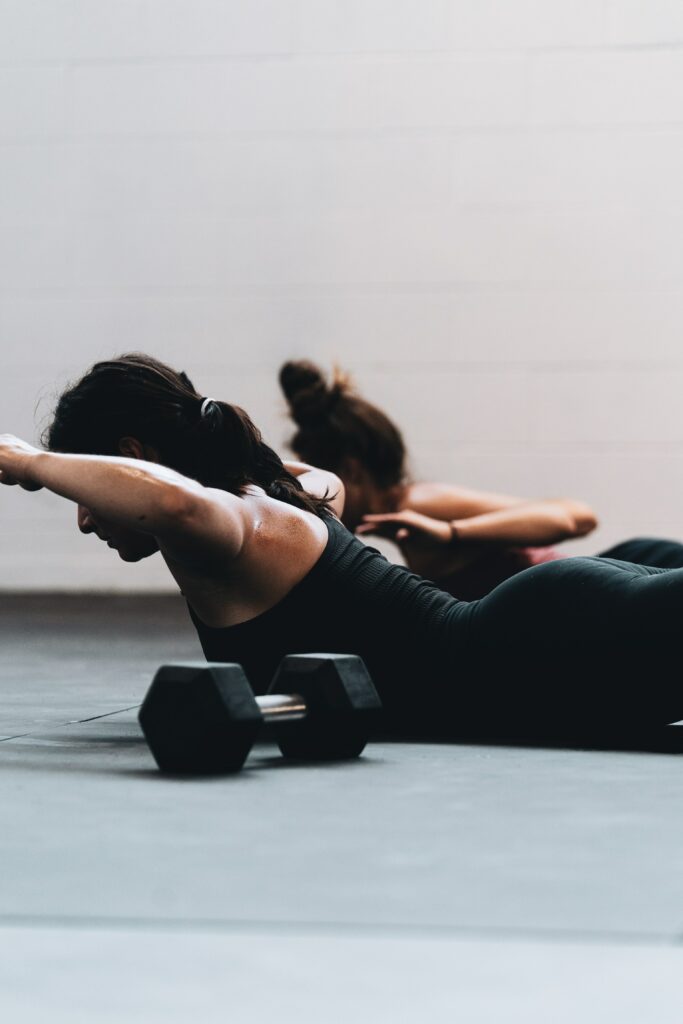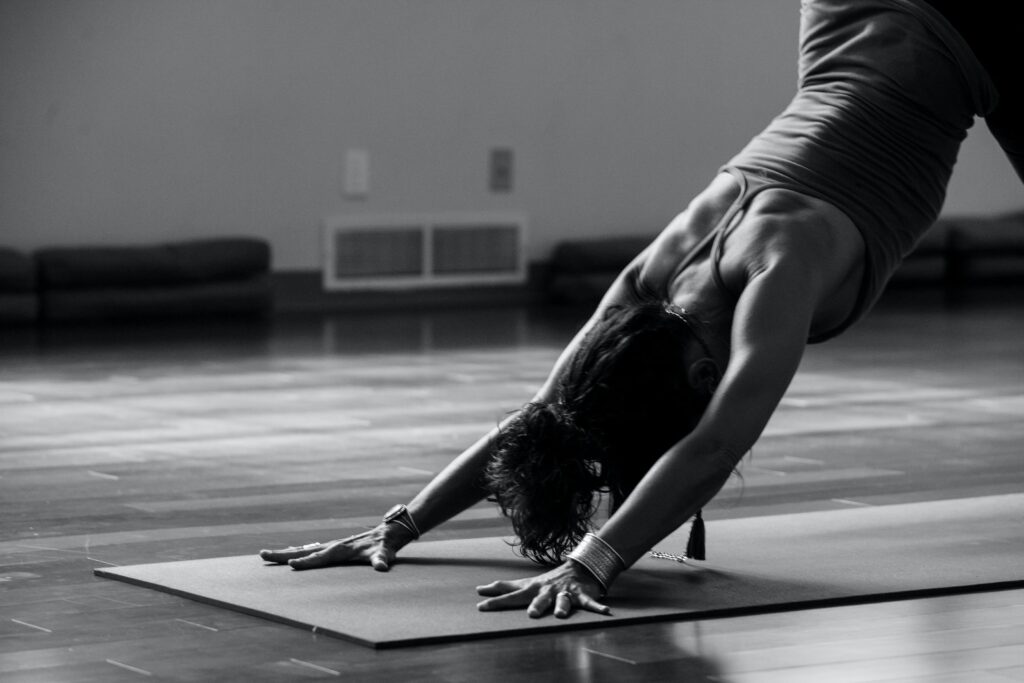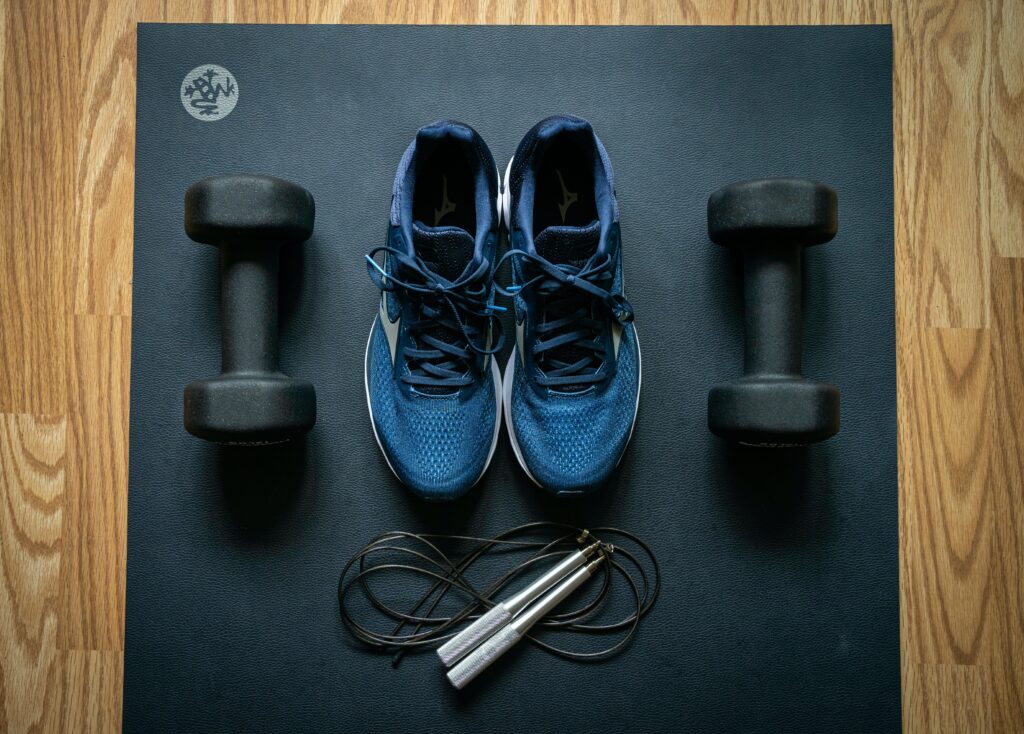After the holidays, getting back into routine can feel like a rocky endeavor—specifically when it comes to exercise. That said, there’s no need to start a strict workout regime or view exercise as a form of punishment. Just like nutrition, the goal is to take a practical, sustainable, and feel-good approach to exercise. Physical activity shouldn’t shouldn’t feel like a chore or a struggle. Rather, movement should be something you look forward to—a chance to grow, mentally and physically. It’s an opportunity to celebrate your body’s strength, endurance, and flexibility. In honor of the start of 2023, there’s no better time to experiment with different forms of movement. Without further ado, below is how to start exercising after the holidays.

What is intuitive movement?
Before we dive into how to ease into a workout routine, let’s talk about intuitive movement.
Intuitive exercise, also known as intuitive movement, is the practice of connecting and listening to your body to figure out how it feels and what type of movement it needs that day.
Ultimately, there’s a difference between forcing yourself to exercise when you feel weak or tired vs. moving your body for the right reasons. The objective is to feel strong (but challenged) when exercising, not exercise to the point of diminishing returns. For example, your period is absent, you’re not sleeping well, you feel anxious if you don’t workout, etc. If you think you’re exercising too much—or simply to “earn” your food—consider working with a healthcare professional. Speaking from personal experience, it is possible to have a supportive, intuitive relationship with exercise.
Check out Julie Newbry for more info on intuitive exercise!

OPTIMIZE YOUR WORKOUTS WITH YOUR CYCLE
Are you currently a menstruating woman? If so, one of the ways you can begin a new exercise routine in 2023 is by syncing your exercise routine with your menstrual cycle. Here is my step-by-step guide for syncing physical activity with each phase of your cycle.
MENSTRUAL PHASE (DAYS 1-5)
This may feel intuitive already, but this is the time for slow, gentle movement. Either take an active rest day (stretch or go for a walk) or choose another form of low-intensity movement—like mat pilates with light weights, yoga, or bodyweight strength exercises. You may feel some energy gradually come back around day 3-4 of your cycle as your estrogen begins to surge again, and at that point you can increase intensity.
FOLLICULAR PHASE (APPROX. DAYS 6-14)
This is when your energy is starting to bounce back! You’re likely feeling more energized, so it’s a great time to increase to moderate-intensity workouts: jogging / power walking, trail running, cycle classes, weight lifting, resistance band or dumbbell strength exercises, etc.
OVULATION PHASE (APPROX. DAYS 15-20)
Consider this the peak of your follicular phase. Thanks to higher levels of estrogen, you’re likely feeling the most energized of any phase of your cycle. Amp up to moderate-to-high-intensity workouts during this phase. You may find you can tolerate HIIT classes, quicker paces, faster recovery, higher weights, etc. during this time. This would be a good time for: interval workouts, running, intense weight lifting, sculpt yoga, speed walking, etc. If there’s a time to push yourself, this is it.
LUTEAL PHASE (APPROX. DAYS 20-28)
The week or so before your period is time to start slowing things down again, decreasing the intensity of your workouts. You may still really want to be active during this phase (which is fine!), but perhaps to a lesser degree.This phrase is perfect for workouts like: hot yoga, resistance band exercises, bodyweight strength, incline walking, and pilates.

How to start exercising after the holidays
Spoiler alert: it doesn’t have to be difficult. Below are five ways to ease yourself back into a workout routine this month.
1. Don’t overexert yourself
No pain, no gain, right? Not so fast. While pushing yourself is typically encouraged in the fitness world, it’s important to slowly build back up your strength and stamina. Whether it’s weightlifting or cardio, doing too much exercise can lead to muscle overuse and injuries. You may not be able to lift as heavy or run as far as you used to, but don’t get discouraged. Like the seasons, we ebb and flow with our exercise routines (particularly after having a baby!). Stay consistent, and remember that every short session counts—even five minutes! If you feel yourself giving up, try to commit to five minutes of a dance party in your kitchen, or a walk around the block while you listen to a few upbeat songs. It’s less about the intensity and more about consistency.
2. Schedule it
Scheduling your workout time is a simple yet effective step. Without a gym schedule, it’s easy to make excuse after excuse to not partake in any exercise. Consider your day-to-day schedule and choose your workout slot based on where you have the most free time. This way, you can mentally prepare yourself as well as avoid any excuses that you are too busy. Put it on your calendar and hold yourself accountable. Yes, this includes at-home workouts. Just because you plan to do a yoga flow in your living room—or lift dumbbells in your garage—pencil it. Also, put your phone on do not disturb to mimic the environment of an in-person workout class.
3. Partner up
Speaking of accountability, find a friend with similar fitness goals. You’ll be that much more motivated to stick to your workout schedule. On the days you don’t feel like exercising, a fitness partner can encourage you to get it done. If one of your fitness goals for 2023 is to try new forms of exercise, schedule your social dates with friends around a pilates, cycling, or kickboxing class. This is also a great way to take care of your social well-being during the wintertime. In the very least, plan to catch up with friends and family (or even take work calls!) while taking a long walk.
4. Set short term goals
Rather than think long-term, consider short-term goals. This will help you see progress, sooner, and help you feel less overwhelmed. In many ways, it can feel defeating (and frustrating) if you aren’t seeing changes right off the bat. In turn, it’s easy to give up. Instead, set goals over shorter time frames—goals that are manageable and very realistic. Also, it’s worth the reminder that simply focusing on physical appearance is an inevitable way to feel let down. A few short-term goal examples: going for a 10 minute walk every day; stretching for five minutes before bed; doing squats while you brush your teeth; or lifting weights 2x per week. Don’t underestimate the power of a daily walk!
5. Focus on protein
While January is a hot bed for diet culture, weight loss programs, etc., don’t expect to get stronger and build lean muscle if you aren’t eating enough protein and complex carbohydrates. Both of these macronutrients support building muscle, improving metabolism, and aiding in overall satiation. Ultimately, whether your goal is to build muscle or lose body fat, prioritizing protein is key. This particular nutrient helps to repair and rebuild muscle, thus reducing soreness. A few examples: organic chicken, deli turkey, pastured eggs, collagen peptides, Greek yogurt, cottage cheese, lentils, and tempeh.

Images courtesy of Unsplash. This article contains affiliate links. Thank you for supporting Wellness with Edie! This article is for informational purposes only. It is not, nor is it intended to be, a substitute for professional medical advice, diagnosis, or treatment and we recommend that you always consult with your healthcare provider.



Leave a Reply